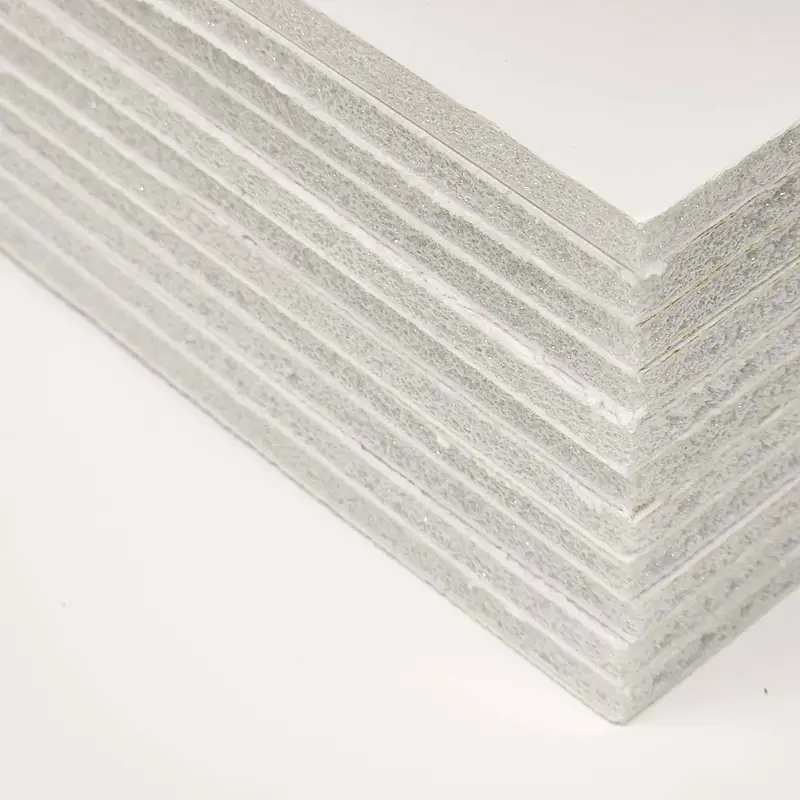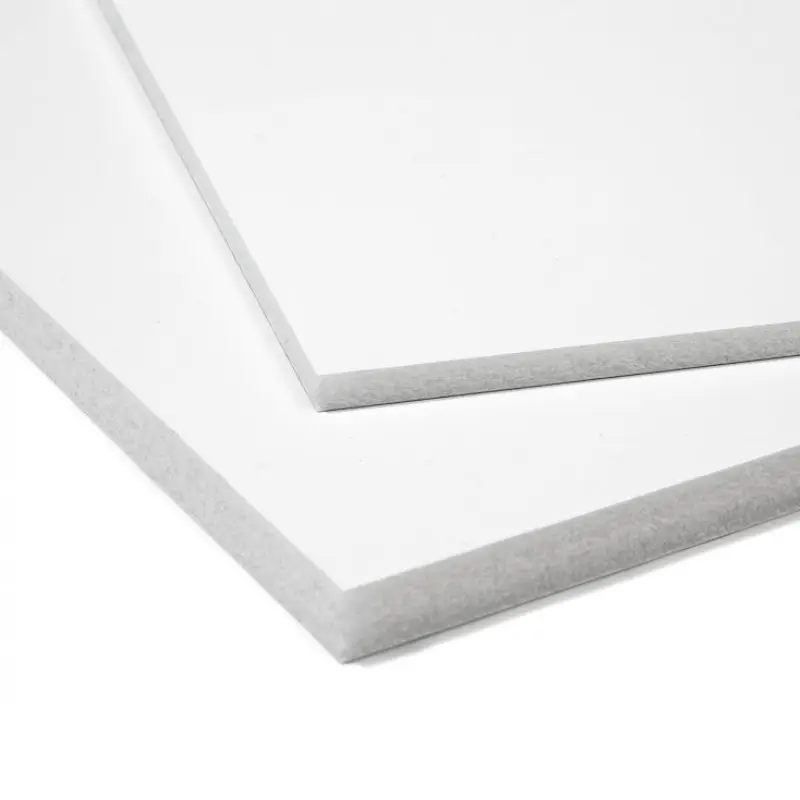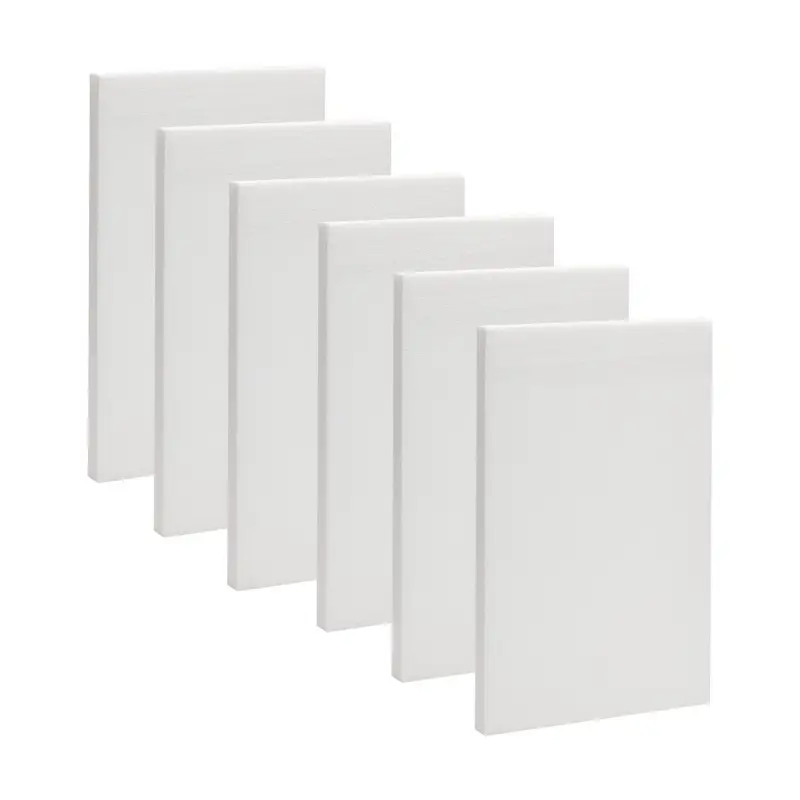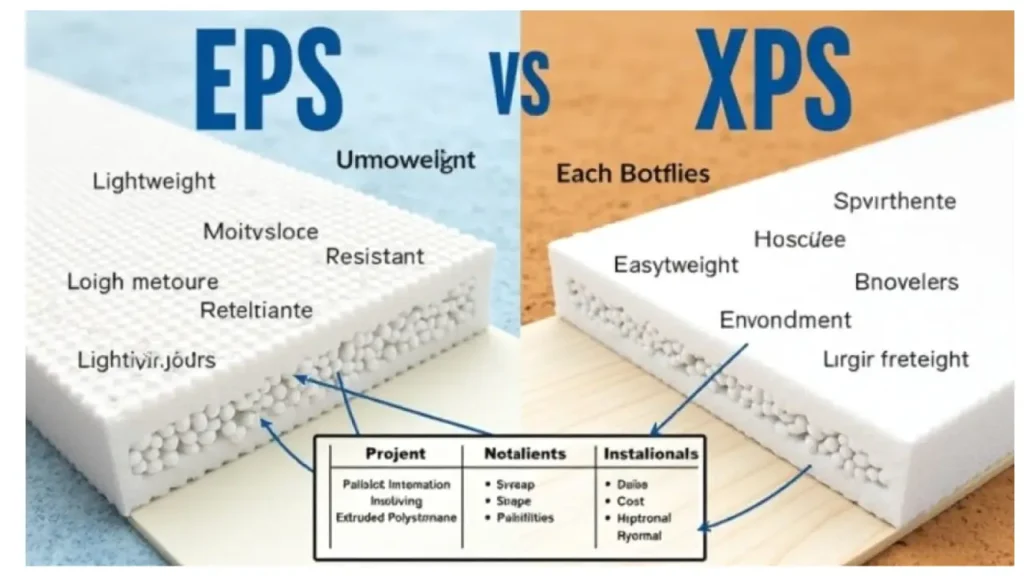Foam board, a versatile and lightweight material, finds applications across various industries, from construction to arts and crafts. This blog post aims to demystify the world of foam boards, exploring the diverse types available and their unique characteristics. Understanding these distinctions is crucial for selecting the optimal material for your specific project.
We’ll delve into the properties of EPS, XPS, foam core, and other foam board varieties, highlighting their strengths and weaknesses. By examining their insulation capabilities, structural integrity, and ease of use, you’ll gain the knowledge needed to make informed decisions for your next endeavor.
What Is Foam Board

Foam board, also known as foam core or mounting board, is a lightweight material commonly used in various applications, including crafting, signage, and construction. It consists of a foam core, typically polystyrene or polyurethane, sandwiched between two outer layers of a stiffer material, such as paper or cardstock. This construction creates a rigid yet easily cut and shaped board, making it versatile for diverse projects.
The properties of foam board vary depending on the core and outer layer materials. Polystyrene foam cores offer excellent insulation and are commonly used in construction applications, while polyurethane cores provide greater durability and are often preferred for signage and displays. The outer layers contribute to the board’s rigidity and surface finish, allowing for printing, painting, and mounting of various materials. Its lightweight nature and ease of handling make foam board a popular choice for both professional and DIY projects.
Types of Foam Board
Foam boards, versatile materials used across various industries, offer unique properties that make them suitable for diverse applications. Understanding the different types and their specific characteristics is crucial for selecting the right material for your project. This guide explores the most common foam board types, detailing their benefits and applications.
Expanded Polystyrene (EPS) Foam Board



Benefits: EPS foam board offers high thermal resistance, lightweight nature, and cost-effectiveness. Its closed-cell structure effectively resists heat transfer, contributing to energy efficiency in buildings. Its high compressive strength allows it to withstand structural loads, making it suitable for use in structural insulated panels (SIPs).
Applications: EPS foam board is primarily used for thermal insulation in construction, insulating walls, roofs, and foundations. Beyond insulation, it’s employed in packaging due to its excellent cushioning properties, protecting fragile items during transit. It’s also used in crafting and model making, where its ease of cutting and shaping is advantageous.
Its cost-effectiveness and availability in various thicknesses and densities make EPS a popular choice for numerous applications. However, EPS is susceptible to UV degradation and is not as durable as some other foam board types. Its environmental impact, however, should be considered, as EPS is not biodegradable.
Extruded Polystyrene (XPS) Foam Board

Benefits: XPS offers superior moisture resistance and higher compressive strength compared to EPS. Its denser, closed-cell structure, created through an extrusion process, results in a smoother surface and greater durability. Its moisture resistance is a key advantage, allowing it to perform well in damp environments like basements and foundations.
Applications: XPS foam board is used for thermal insulation, particularly in roofing applications, where its high compressive strength and moisture resistance are essential. It’s often used as an insulation layer beneath roofing membranes, providing long-term thermal performance and structural support. In construction, XPS is also used for below-grade insulation and as a component in structural insulated panels (SIPs). While having those benefits, XPS tends to be more costly than EPS foam.
Foam Core Board
Benefits: Foam core board offers a smooth surface, lightweight nature, and affordability. Its rigidity provides stability for mounted materials, while its lightweight nature makes it easy to transport and display.
Applications: Foam core board is primarily used for signage, displays, and mounting artwork. It’s widely used in the framing industry, providing a flat, stable surface for mounting photographs and artwork. It’s also popular in crafting and model making, where its ease of cutting allows for intricate designs. Its affordability and availability in various colors and thicknesses make foam core a versatile material for numerous creative projects. However, foam core is susceptible to moisture damage and is not suitable for outdoor applications. Foam core, though easy to utilize, is fragile and is not intended to be used in structurally demanding situations.
EPS vs XPS Foam Board

When choosing between EPS (Expanded Polystyrene) and XPS (Extruded Polystyrene) foam boards, understanding their distinct characteristics is crucial for selecting the optimal material for your specific application. Both are used for insulation, but their manufacturing processes and resulting properties differ significantly.
Material Properties
EPS foam board is created by expanding polystyrene beads, resulting in a closed-cell structure with air gaps between the beads. This process makes EPS lightweight and cost-effective, offering good thermal insulation. However, its structure makes it more permeable to moisture and less resistant to compressive forces compared to XPS. XPS, on the other hand, is manufactured through an extrusion process, creating a denser, uniform closed-cell structure. This results in a smoother surface, higher compressive strength, and superior moisture resistance. XPS maintains its R-value (insulation effectiveness) better in damp conditions.
Therefore, while EPS is an economical choice for above-grade insulation and general packaging, XPS is preferred for below-grade applications, foundations, and roofing, where moisture resistance and compressive strength are paramount. XPS foam exhibits a generally higher level of initial R-value, but over time, if moisture is present, EPS can out preform XPS.
Here is a table summarizing the key differences between EPS and XPS foam boards:
| Feature | EPS (Expanded Polystyrene) | XPS (Extruded Polystyrene) |
| Manufacturing Process | Expanded polystyrene beads | Extrusion process |
| Cell Structure | Closed-cell with air gaps | Uniform closed-cell |
| Density | Lower | Higher |
| Compressive Strength | Lower | Higher |
| Moisture Resistance | Lower | Higher |
| R-Value (Insulation) | Good, but can degrade with moisture | Higher, more stable in damp conditions |
| Cost | Lower | Higher |
| Applications | Above-grade insulation, packaging | Below-grade insulation, foundations, roofing, SIPs |
| Environmental impact | varies, can degrade into smaller beads | varies, blowing agents can have environmental impact |
| Surface | more rough | more smooth |
Application Considerations
EPS foam board is commonly used in residential construction for wall and roof insulation, as well as in packaging for fragile items. Its ease of cutting and shaping makes it versatile for various projects. However, its susceptibility to moisture absorption limits its use in below-grade applications. XPS foam board, due to its moisture resistance and high compressive strength, is ideal for foundation insulation, below-grade wall insulation, and roofing applications. It’s also used in structural insulated panels (SIPs) where its durability is essential.
Choosing between EPS and XPS depends on the specific requirements of your project. If moisture resistance and high compressive strength are critical, XPS is the preferred choice. However, if cost-effectiveness and general insulation are the primary concerns, EPS may be a suitable option. Ultimately, considering the long term benefits of each material within the applications moisture potential is very important.
How to Choose the Best Foam Boards
Selecting the optimal foam board for your project requires careful consideration of various factors, ensuring the chosen material aligns with your specific needs and application. Understanding the nuances of each foam board type will guide you in making an informed decision.
Project Requirements
Begin by defining the specific requirements of your project. Consider the intended use of the foam board, such as insulation, signage, or crafting.
For insulation purposes, EPS or XPS foam boards are ideal due to their thermal resistance. If your project involves signage or displays, foam core board’s smooth surface and ease of cutting make it a suitable choice. Assess the environmental conditions the foam board will be exposed to, as moisture and UV exposure can affect certain types of foam boards.
Evaluate the required dimensions, thickness, and density of the foam board. The size and shape of your project will dictate the necessary dimensions, while the required thickness will depend on the desired structural integrity and insulation properties. The density of the foam board affects its compressive strength and thermal performance. Consider any specific finishing requirements, such as painting, printing, or laminating, as different foam boards offer varying surface finishes and compatibility with these processes.
Material Properties
Consider the material properties of each foam board type. EPS foam board offers excellent thermal insulation and cost-effectiveness but is susceptible to moisture and UV damage. XPS foam board provides superior moisture resistance and higher compressive strength, making it suitable for damp environments and structural applications. Foam core board, with its smooth surface and lightweight nature, is ideal for signage and displays but is fragile and not suitable for structural use.
Evaluate the thermal conductivity (R-value) of the foam board if insulation is a primary concern. A higher R-value indicates better insulation performance. Consider the compressive strength of the foam board if it will be subjected to structural loads. XPS foam board typically offers higher compressive strength than EPS. Assess the moisture resistance of the foam board, especially if it will be used in damp environments. XPS foam board is more resistant to moisture than EPS and foam core. Consider the environmental impact of the foam board, as some types are more recyclable and sustainable than others.
Get Desired EPS Foam Now
Navigating the diverse landscape of foam boards requires a clear understanding of their unique properties and applications. From the rigid insulation of EPS to the versatile adaptability of XPS and the smooth finish of foam core, each type serves distinct purposes. Ultimately, the best choice hinges on the project’s specific needs, balancing factors like insulation, durability, and cost-effectiveness.
By weighing these characteristics, you can effectively select the optimal foam board for your construction, crafting, or display needs. Whether you require robust thermal resistance or delicate surface precision, the right foam board ensures project success. This exploration provides a comprehensive guide to understanding and choosing the best foam board for your next project.
Ready to leverage the superior insulation and cost-effectiveness of EPS foam? Contact Epsole today for wholesale EPS foam board solutions tailored to your project requirements. Experience the Epsole advantage in quality and service.
